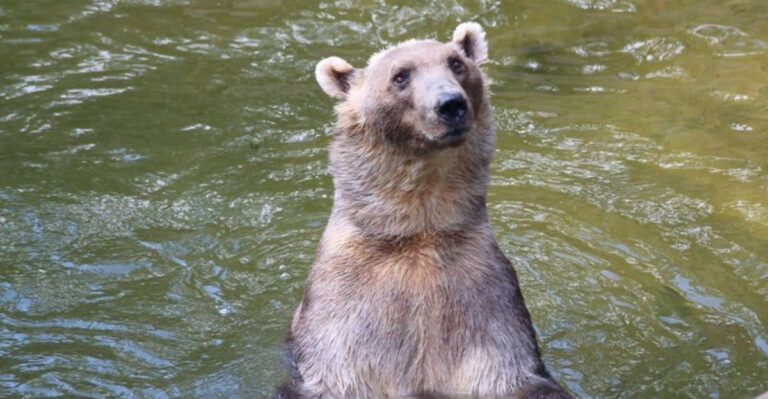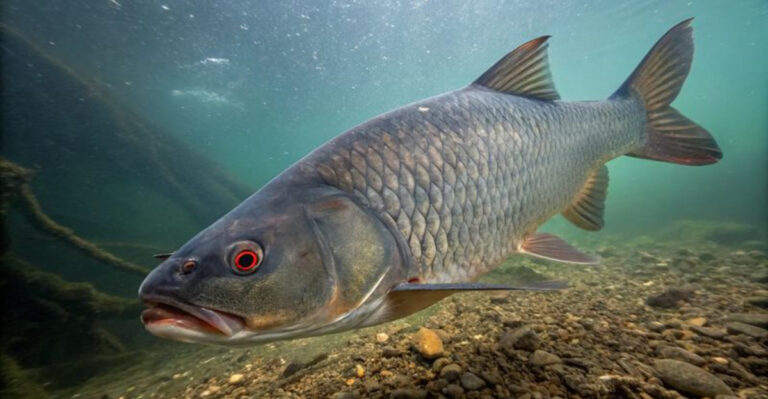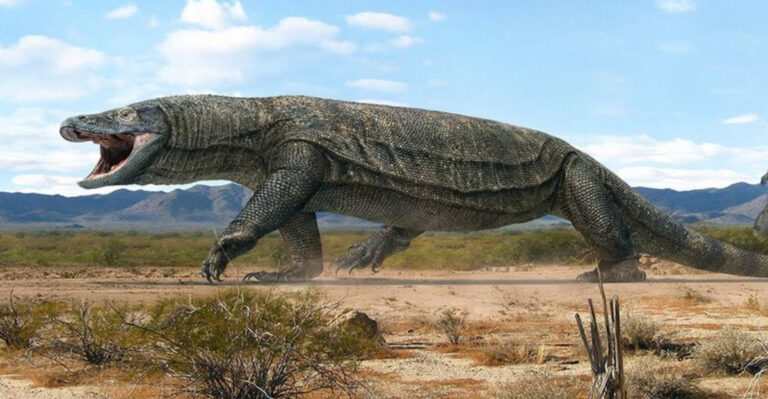7 Most Threatening Animals Found In Texas Lakes And Rivers
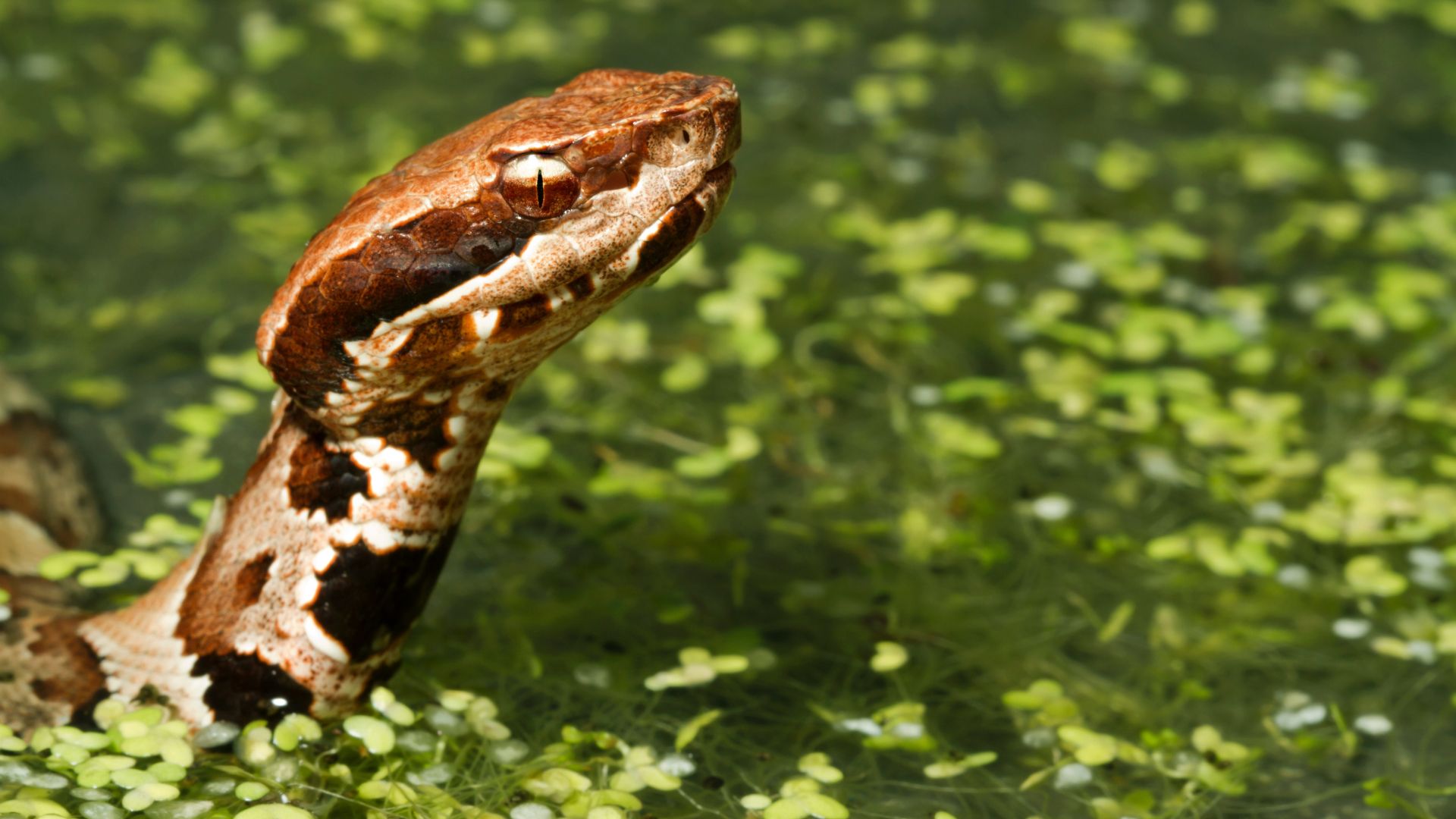
The waters of Texas are home to a variety of fascinating creatures, some of which can pose serious threats to humans.
While exploring the state’s lakes and rivers, it’s important to be aware of the potential dangers lurking beneath the surface.
Here’s a closer look at 7 of the most threatening animals you might encounter in these waters.
1. Alligator Gar
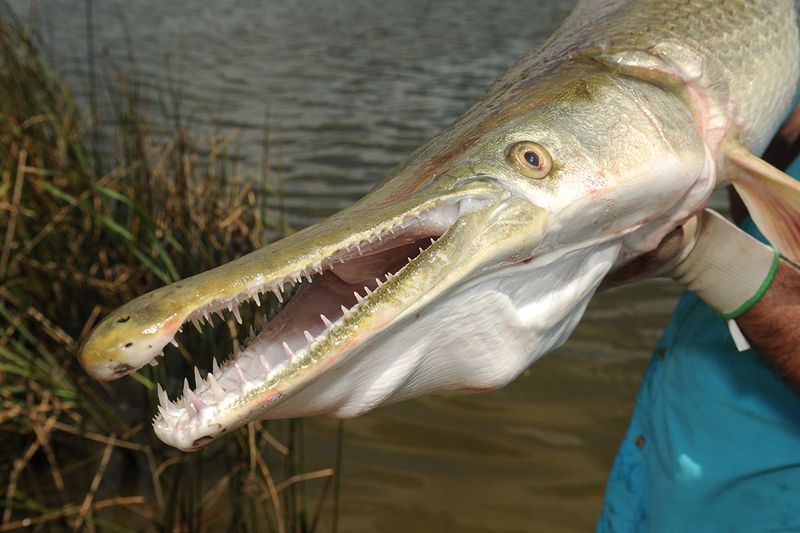
The Alligator Gar, a prehistoric-looking fish, is one of the most formidable creatures in Texas waters.
Known for its elongated body and sharp, dual rows of teeth, this fish resembles an alligator, hence its name. Often found in slow-moving rivers and lakes, it can grow up to ten feet in length and weigh over 300 pounds.
While they might look intimidating, Alligator Gars are generally not aggressive towards humans. However, their size and strength should not be underestimated. Anglers prize them for their challenging catch, but handling them requires caution due to their sharp teeth and powerful jaws.
These fish play a crucial role in their ecosystem by controlling the population of smaller fish. However, if provoked or cornered, they can inflict serious injuries with their teeth.
It’s best to observe these majestic creatures from a safe distance, appreciating their ancient lineage and unique appearance without disturbing their natural habitat.
2. American Alligator
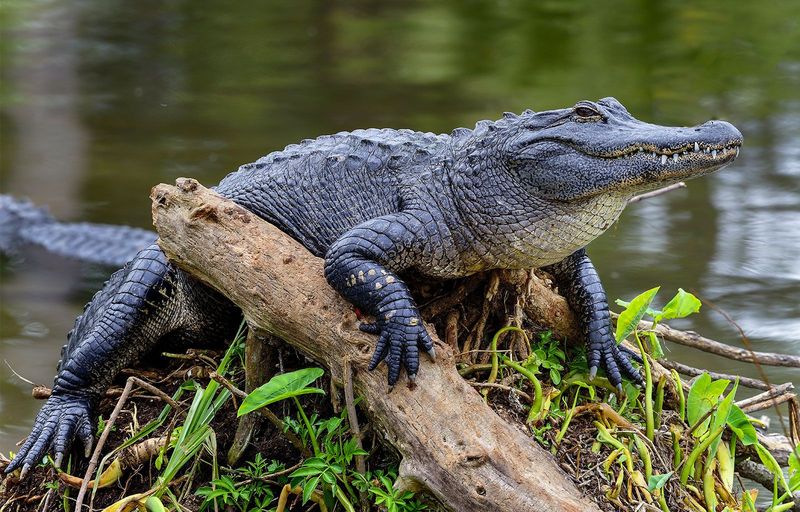
The American Alligator is a well-known resident of Texan waters, often seen basking in the sun along the banks of lakes and rivers. With their massive size, reaching up to 15 feet in length, they are a formidable presence.
These reptiles are opportunistic feeders, preying on fish, birds, and mammals. While attacks on humans are rare, it’s wise to exercise caution when near their habitat, especially during mating season when they are more aggressive.
Their powerful tails and strong jaws can deliver devastating blows if threatened. Always keep a respectful distance and never attempt to feed or provoke them.
Familiarize yourself with local alligator safety guidelines, and be aware of their presence when enjoying Texas’s beautiful waterways.
3. Water Moccasin
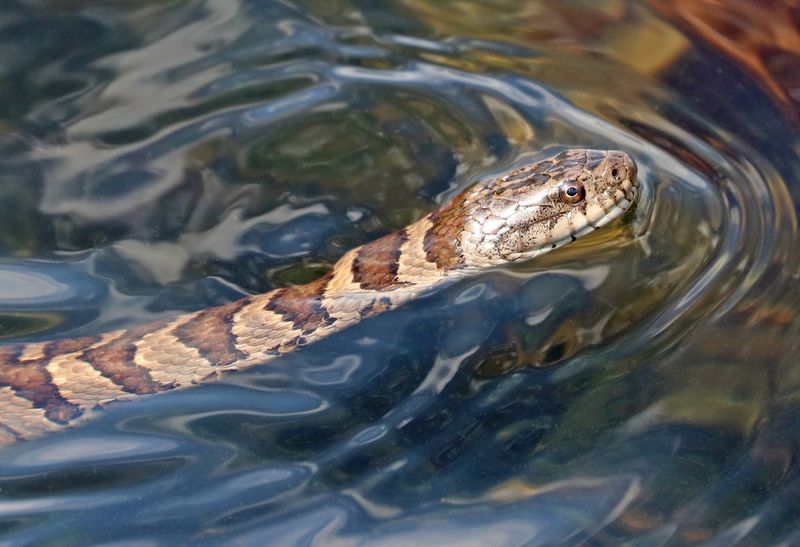
The Water Moccasin, also known as the cottonmouth, is a venomous snake that inhabits the swampy areas of Texas. Recognizable by its thick, dark body and distinctive triangular head, this snake is a master of camouflage.
Water Moccasins are often found basking on logs or rocks near water. They are known for their defensive behavior, often displaying a wide-open mouth as a warning sign. Their bite can be painful and dangerous, requiring immediate medical attention.
Despite their fearsome reputation, Water Moccasins typically avoid human interaction. If you encounter one, give it plenty of space to escape.
Always wear protective footwear when walking through their habitats and be mindful of where you step. Education and awareness are key to coexisting safely with these secretive snakes.
4. Bull Shark
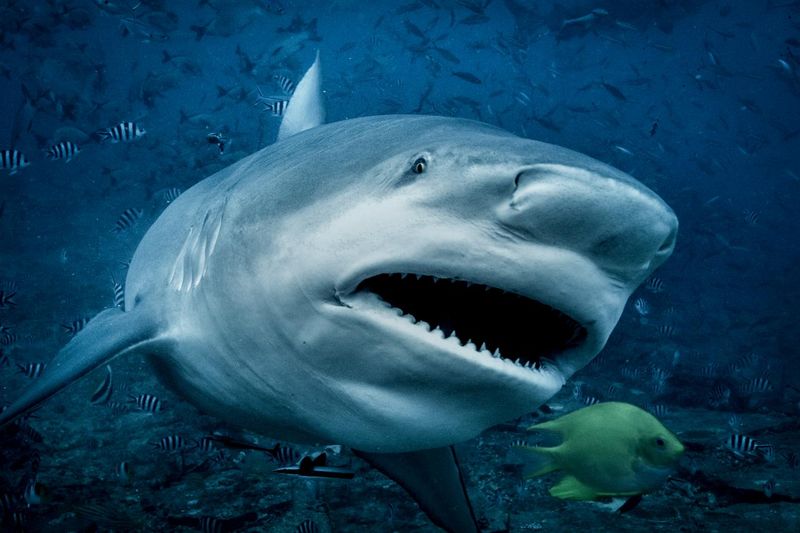
Bull Sharks are one of the few shark species that can thrive in both salt and freshwater, making them occasional visitors to Texas rivers. Known for their stocky build and aggressive nature, these sharks can be found far inland, sometimes hundreds of miles from the ocean.
With a reputation for aggression, Bull Sharks are considered one of the most dangerous sharks to humans. They have a broad diet, feeding on fish, turtles, and even other sharks.
Encounters are rare but can be alarming due to their unpredictable behavior. Swimming in known bull shark habitats requires caution. Avoid swimming at dawn or dusk, and never swim alone.
If you see a shark, remain calm and slowly exit the water, avoiding sudden movements. Awareness and respect for these powerful predators are essential for enjoying Texas’s waterways safely.
5. Blue Catfish
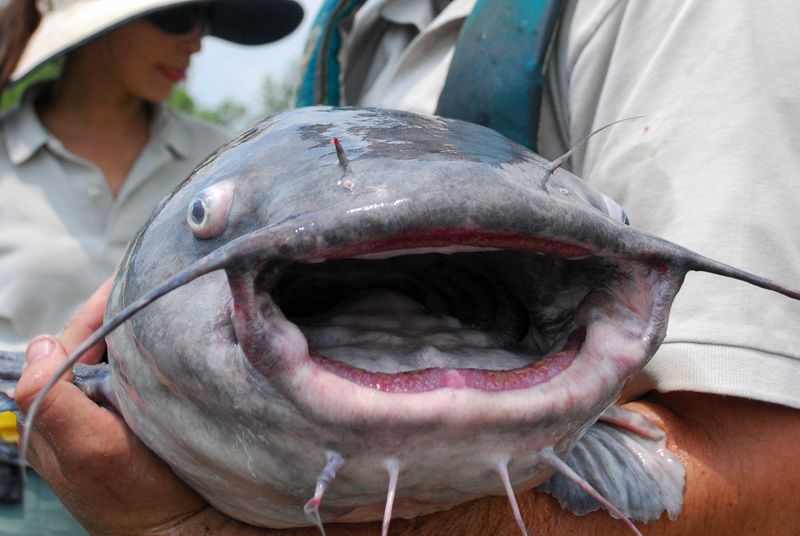
The Blue Catfish is the largest species of North American catfish and can be found in Texas’s lakes and rivers. They are easily identified by their blue-gray color and long, whisker-like barbels around their mouths.
Growing up to 5 feet in length and weighing over 100 pounds, these giants are a favorite among sport fishermen. While not inherently dangerous, their size and strength can pose challenges when trying to reel one in.
Handling a Blue Catfish requires caution due to their sharp dorsal and pectoral fins, which can cause injuries. If you’re fishing for these giants, use appropriate gear and techniques to safely catch and release them.
Their presence in the ecosystem helps maintain a balanced fish population, making them an important part of Texas’s aquatic life.
6. Texas Rat Snake
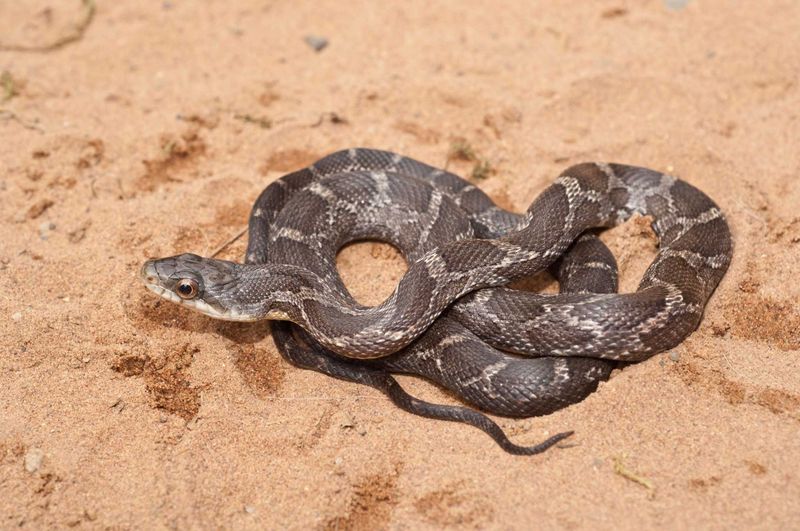
The Texas Rat Snake is a common sight in the areas surrounding Texas’s lakes and rivers. Non-venomous and generally harmless to humans, these snakes are known for their distinctive patterned bodies and impressive climbing skills.
Rat snakes play a vital role in controlling rodent populations, making them beneficial to have around. They are often mistaken for venomous snakes due to their size and appearance, which can lead to unnecessary fear.
If you encounter a Texas Rat Snake, appreciate it from a distance. They may hiss or shake their tails when threatened, but this is merely a bluff.
Allow them to move on undisturbed, and you’ll help maintain the natural balance of the ecosystem. Education and understanding can turn a fearful encounter into a fascinating glimpse of wildlife.
7. Snapping Turtle
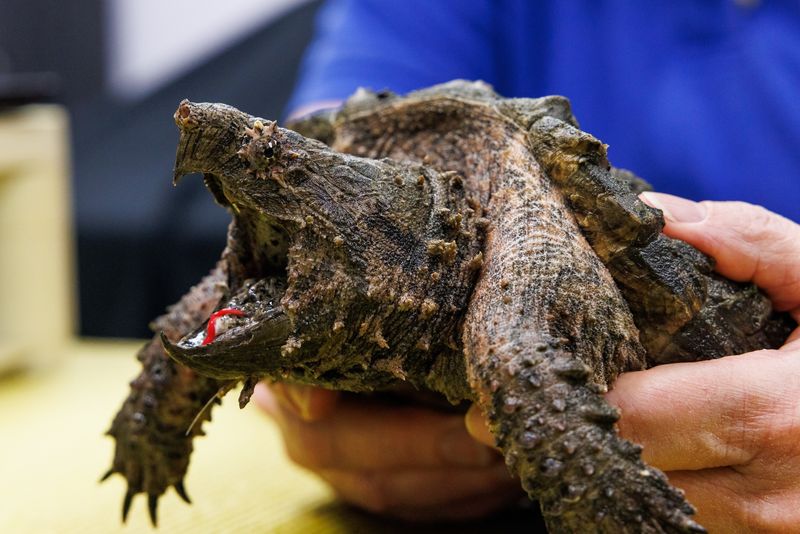
Snapping Turtles are ancient reptiles that inhabit the rivers and lakes of Texas. Known for their rugged shells and powerful jaws, they are not to be trifled with. These turtles can grow quite large, with some reaching up to 80 pounds.
They are generally shy and prefer to avoid human interaction, but if threatened, they will defend themselves aggressively.
Their bites are notoriously strong and can cause serious injury, so it’s best to admire them from a safe distance.
Snapping Turtles play an important role in their ecosystem by scavenging and controlling fish and aquatic plant populations. If you come across one, simply let it be.
Educating yourself about their habits and habitats can enhance your appreciation for these fascinating creatures without putting yourself at risk.

